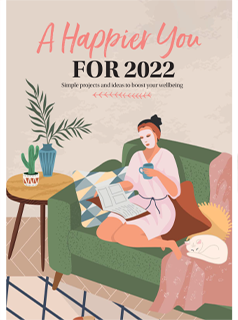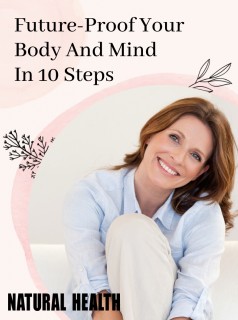Allow your children to be creative beings with an alternative approach to education,says Janey Lee Grace
Allow your children to be creative beings with an alternative approach to education, says Janey Lee Grace
The educational philosophy is that of founder Rudolf Steiner and there are over 30 schools in the UK. The focus is on educating children holistically and there’s a large focus on connecting with nature and being imaginative.
After the birth of my fourth child I decided to send my children to a Steiner school. I’d heard about Steiner education, read about some of the famous alumni, who include: Sandra Bullock,Carey Mulligan, golfer Luke Donald, and singers Jennifer Rush and Annie Lennox.
“Our highest endeavour must be to develop free human beings, who are able to impart purpose and direction to their lives.”Rudolf Steiner
The Steiner nursery is a far cry from the brightly coloured garish plastic toys and loud commercial‘ childrens’ music found in mainstream establishments. It is a haven of tranquility with wooden playhouses and dens fashioned from muslin curtains, while activities follow a specific rhythm of baking bread, preparing vegetables,tending the garden, sewing and knitting.
On a term time visit to the school I was greeted by articulate teenagers offering to direct me to the reception area. I passed beaming children carrying huge organic leeks they’d just harvested from their own patch of biodynamic land. In a classroom children were in the middle of a maths lesson. Forget electronic boards, this is traditional teaching with a blackboard, a teacher using chalk and old-style desks facing the front. The class seemed engaged and animated and there was not a laptop or electronic calculator in sight.
Innocent Souls
Steiner schools try to protect children fromthe three dangers Rudolf Steiner noted way back in 1919
DANGER 1: The mechanisation of the spirit.It’s recommended that children read and have classic stories read to them rather than spoiling the power of the imagination too soon with action movies. Steiner principles strongly advise against computer games when children are developing.
DANGER 2: Vegetation of the soul.In modern life,we have become desensitised and numb to distressing news items or horror films.
DANGER 3 : Animalisation of the body. This can be seen in the epidemic of sex in modern culture and the fixation with body image and early sexualisation.
Case Study
Tee Macpherson, a businesswoman from Hertfordshire, experienced both types of education
“With one child in mainstreamschool and two children aged 17and 12 at a Steiner school,I can clearly identify the benefits my children receive from their Steiner education versus mainstream. The Steinera pproach to teaching equips children with a love of learning by encouraging them to explore,challenge, enquire and think independently, ensuring they leave school having retained so much of what they have learnt. I truly believe the Steiner’s practical hands-on approach to teaching really does equip the children with essential life skills.These skills are not easily measured in an exam, sadly our mainstream schools dilute a lot of the passion and desire to learn through having to follow a rote-style structure and measured learning method,potentially limiting our children’s opportunity to reach their full potential.”
Cool Kids
So, in the absence of computers, regular TV watching, branded logos and yearly examinations, are Steiner kids out of touch with the real world, a bunch of ‘hippy ippies’ held back and unable to fit in with conventional society? Not at all. My kids,now all Steiner pupils, have lots of friends in conventional schools and they rub along just fine. If anything their mates are rather jealous that they don’t have to wear uniform or do copious amounts of homework.
The lack of computers was one of the deciding factors in our decision to send our children to a Steiner school. I’ve long thought that children are exposed too early to screens and electronic equipment. A leading psychologist, Doctor Aric Sigman,provided some very sobering statistics which prove that early and excessive use of screens and computers can lead to increased appetite and obesity, erectile dysfunction, lack of empathy, suppressed melatonin (which affects growth hormones)and raised cholesterol levels, among other worrying conditions.
It’s not right for everyone but for us right now we feel we have found the best possible option to help our kids be the best they can be.
The Phases of Childhood
Steiner schools don’t follow the national curriculum butthe breadth of education is faultless. The aim is for kids to be nurtured as individuals and leave as secure adults
In the first seven years the focus is on the life force and growth so the nursery is for imaginative play and everyday ‘work’ including cooking, sewing and gardening.
By the age of seven the child’s intellectual development scan begin. This belief in the development phases explains why children in Steiner schools don’t start formal learning,such as reading, until this time. Across Europe in both Steiner and mainstream schools this is the norm.
As they reach 11 or 12 years old they are beginning to want to ‘fit in’ with the culture and peer pressure is extremely strong. This is where the Steiner philosophy of ‘no commercial branding’ is so beneficial. Although there are no school uniforms, logos are banned. Not ‘buying into’brands, consumerism and commercialisation is a huge relief for many parents and it’s great to know your child won’t be the only one without expensive Nike trainers or carrying the latest electronic gadget.
At 12 and 13 their physical growth can be huge and they also move into more introspective thinking phases as they enter their teens. The pupils’ two hour main lesson moves through topics as diverse as botany, surveying, business studies and philosophy.
When they reach puberty, the school’s focus turns to‘grounding’ and it’s important not to over stimulate with TV and computers. Parents are advised that our task is to create a protective ‘bubble’ so that children don’t ‘buy into’the imagery around them. They need hero-figures and role models who are real, rather than Disney characters.
Article by
Janey Lee Grace
is a holistic lifestyle expert. She is the author of Look Great Naturally – Without Ditching the Lipstick (£8.99, Hay House)
Discover more
Article by
Janey Lee Grace
is a holistic lifestyle expert. She is the author of Look Great Naturally – Without Ditching the Lipstick (£8.99, Hay House)
Discover more


 By Janey Lee Grace
By Janey Lee Grace 




















